The iPhone 6 Review
by Joshua Ho, Brandon Chester, Chris Heinonen & Ryan Smith on September 30, 2014 8:01 AM EST- Posted in
- Smartphones
- Apple
- Mobile
- iPhone 6
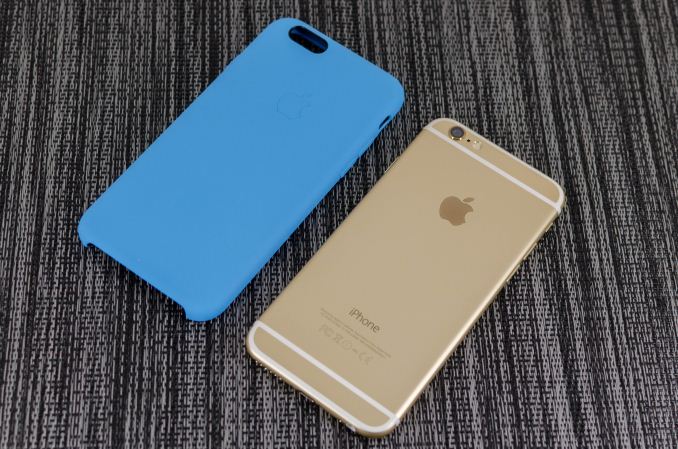
With every launch of the iPhone, Apple seems to have everything to lose and not much to gain. Apple’s iPhone line accounts for the majority of profits in the smartphone space, and as the smartphone market marches towards maturity it seems inevitable that companies like Xiaomi will be able to deliver largely similar experiences at much lower prices. The same once happened with Apple in the days of the PC industry where Apple approached irrelevance. Yet generation after generation, Apple seems to be able to hold on to a majority of profit share, and they’ve managed to tenaciously hold on to their first-mover advantage.
This brings us to the iPhone 6. This is now the eighth generation of the iPhone, and the fifth generation of the iPhone’s industrial and material design. We should note right now that this review is specifically for the iPhone 6; for the iPhone 6 Plus, please see our iPhone 6 Plus companion review. At this point, it’s not really possible to revolutionize the smartphone, and on the surface, the iPhone 6 seems to be directly inspired by the iPod Touch. However, instead of the chamfered edge where the display meets the metal unibody we see a continuous curve from the sloping glass to the metal unibody that looks and feels great. While the M8 was one of the best phones for in-hand feel, the iPhone 6 goes a step further due to the reduced weight and rounded side. I've always felt like the HTC 8X had one of the most compelling shapes for a phone, and the incredibly thin feel of the iPhone 6 definitely reminds me of that.
Along the left side, we see the standard volume buttons and mute switch that continue to have the same solid feel and clean clicking action. As I discuss in the iPhone 6 Plus review, going by Consumer Reports' data it seems that there is a weak point near the bottom of the volume rocker, although it's far less likely to be an issue on the iPhone 6 due to its smaller size. Along the top, there isn’t a power button because it’s been moved to the right side of the phone so there’s nothing notable on the top.
On the right side, we see the previously mentioned power button and also the SIM tray, which is ejected by inserting a pin into the eject hole. Similarly to the volume buttons, the power button has a solid feel that gives a distinct click when triggered and continues to be quite unique when compared to phones other than recent iPhones.
The bottom has the Lightning connector, speaker, a microphone, and 3.5mm headset jack. The placement and design of all these elements are largely similar if not shared directly with the iPod Touch.
The back of the phone continues to share elements from the iPod Touch. The camera, microphone, and LED flash are almost identical in their appearance, even down to the camera hump’s design. The LED flash does look different to accommodate the second amber flash, but the shape is identical. The only real difference is that the antennas of the iPhone 6 are the metal pieces on the top and bottom, with the associated plastic lines instead of a plastic RF window.
The front of the phone is decidedly more similar to the iPhone 5s though, with the Touch ID home button. While the earpiece hasn’t moved, it seems that the front facing camera has been moved back to the left side of the earpiece, and the sensors for light and proximity are now above the earpiece. For the most part, there’s not much to comment on here but after using the iPhone 6 for an extended amount of time I’m definitely sure that the home button is relatively closer to the surface of the display glass than before. In addition, the home button has a dramatically improved feel, with short travel, clean actuation, and a reassuring click in most cases.
Overall, while I was undecided at the launch of the iPhone 6 I definitely think the look of the new iPhone has grown on me. The camera hump’s accent serves as an interesting design touch, and the feel of the design is definitely much more comfortable and ergonomic than before. I’m not really sure that the extra reduction in thickness was necessary, but it does make for a better first impression. In the launch article I was a bit surprised that Apple chose to have a camera hump but given the fact that the iPod Touch has the same design it seems that there is precedent for such a move. I personally feel that the design wouldn’t be worse by increasing thickness to eliminate the hump and improve battery life as a result.
Apple has also introduced a new silicone case, which brings a lower price point than the leather cases. Surprisingly, this is a rather high quality case, and as far as I can tell it doesn’t carry any of the issues that silicone cases traditionally have. There’s a nice lip to make sure that the display glass doesn’t touch a surface if the phone is put face down, and the material doesn’t seem to stretch or attract pocket lint the way most silicone cases do.
There’s definitely a lot more to talk about though, and to get a sense of the major differences I’ve put together our usual spec table below.
| Apple iPhone 5s | Apple iPhone 6 | Apple iPhone 6 Plus | |
| SoC | Apple A7 | Apple A8 | Apple A8 |
| Display | 4-inch 1136 x 640 LCD | 4.7-inch 1334 x 750 LCD | 5.5-inch 1920 x 1080 LCD |
| WiFi | 2.4/5GHz 802.11a/b/g/n, BT 4.0 | 2.4/5GHz 802.11a/b/g/n/ac, single stream, BT 4.0, NFC | |
| Storage | 16GB/32GB/64GB | 16GB/64GB/128GB | 16GB/64GB/128GB |
| I/O | Lightning connector, 3.5mm headset | ||
| Size / Mass | 123.8 x 58.6 x 7.6 mm, 112 grams | 138.1 x 67 x 6.9 mm, 129 grams | 158.1 x 77.8 x 7.1 mm, 172 grams |
| Camera |
8MP iSight with 1.5µm pixels Rear Facing + True Tone Flash 1.2MP f/2.4 Front Facing |
8MP iSight with 1.5µm pixels Rear Facing + True Tone Flash 1.2MP f/2.2 Front Facing |
8MP iSight with 1.5µm pixels Rear Facing + True Tone Flash + OIS 1.2MP f/2.2 Front Facing |
| Price | $99 (16GB), $149 (32GB) on 2 year contract | $199 (16GB), $299 (64GB), $399 (128GB) on 2 year contract | $299 (16GB), $399 (64GB), $499 (128GB) on 2 year contract |
As you can see, this is a major release even at a high level. While the design might take some inspiration from the iPod Touch, the hardware is a completely different beast. There’s a new SoC, the A8; the iPhone 6 also includes a bigger and better display, newer WiFi module, bigger battery, and a better camera. Of course, there’s a lot more to the story of the iPhone 6 than a spec sheet. The first major difference that we’ll talk about is the SoC.


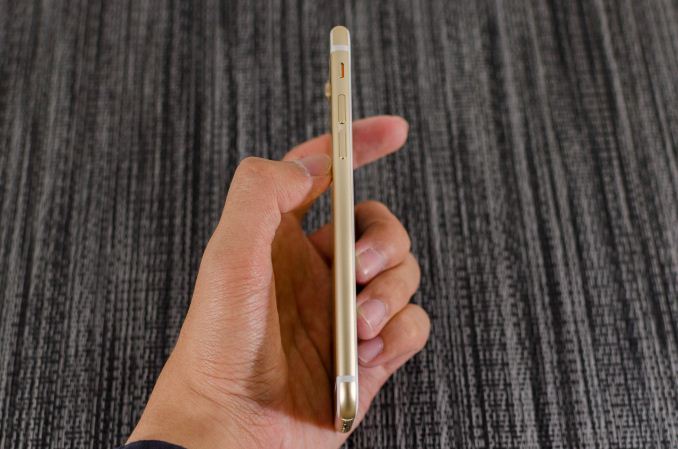
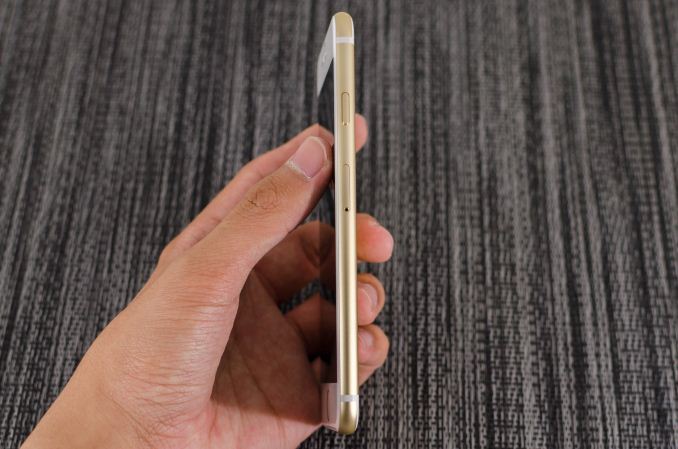
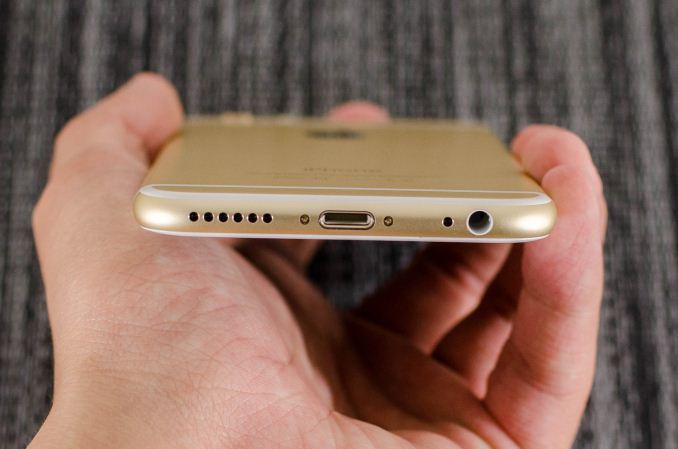
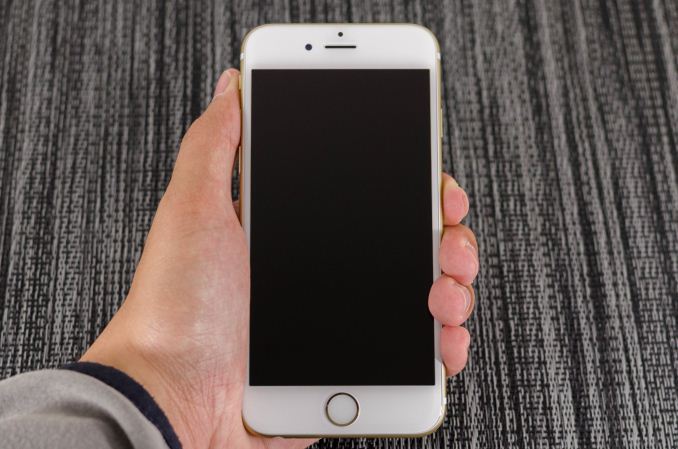
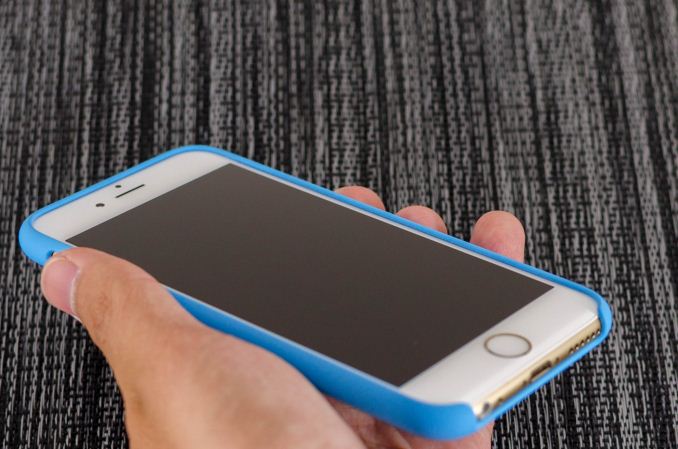








531 Comments
View All Comments
rUmX - Tuesday, September 30, 2014 - link
Wait for USB Type-C.mrochester - Wednesday, October 1, 2014 - link
Why are we waiting? We should have had it 2 years ago when Apple released the iPhone 5.grayson_carr - Tuesday, September 30, 2014 - link
Can't agree with you there. My wife has been through countless lightning cables. Apple branded cables either come apart at the seam between the connector and cable or just stop working after 6 months to a year with heavy use, even if there is no visible external damage. Just look at the reviews of Apple's lightning cable on their website and you'll see how terrible they are: http://store.apple.com/us/product/MD818ZM/A/lightn... (80% are 1 star out of 5). Apple covers one replacement, but after that you're on your own. Third party lightning cables, no matter how reputable the brand, always either stop working after a while or the iPhone will suddenly start saying the third party accessory is not compatible.I think the chip Apple requires in lightning cables is the culprit for most of these headaches. I think they die quickly, far before the lifetime of the cable itself, which is why cables will suddenly stop working for no apparent reason or start being labeled as not compatible.
Whatever the cause, I have NEVER had a micro USB die on me. Micro USB cables are also much cheaper than lightning cables. Finally, all of my other electronics use micro USB (Chromecast, Android phones, Kindles, cameras, etc.) which is awesome! I can have a single cable in my car that charges all of my gadgets (except my wife's stupid iPhone of course). For those three reasons, micro USB is far superior to lightning. Being able to insert the stupid cable either way doesn't come close to outweighing the benefits of micro USB I just listed.
mrochester - Tuesday, September 30, 2014 - link
And to respond to that, I've never had any Apple cables, whether it be the old dock connector or lighting cables and ports, break. Contrary to that, my sister's USB port in her Galaxy S3 broke, her Samsung charger ended up with bent pins and my partner's Samsung Galaxy S2 charger ended up fraying at the micro USB end.mrochester - Tuesday, September 30, 2014 - link
Of course, being able to insert the cable in any orientation and it being more reliable makes the benefits of the lighting connector far outweigh micro USB.grayson_carr - Tuesday, September 30, 2014 - link
Well, since reliability could go either way depending on your luck, we have...1) Being able to insert the cable in any orientation
vs.
1) Much lower price
2) A standard that is compatible with many more devices (Cameras, e-readers, Android phones and tablets, Windows phones and tablets, hard drives, portable speakers, etc., etc., etc.)
I would take the bottom two benefits any day over the top single benefit. Imagine if every company was as stubborn as Apple and designed their own cable. I would have to have 20 different types of cables lying around my house and it would be a HUGE pain trying to find the correct cable for the device. Instead, I can have one or two micro USB cables that can work with pretty much anything in my house, excluding iOS devices of course. That principle alone is enough to make me dislike Apple's lightning cable. Standards are a good thing. Proprietary sucks. Thank God other companies haven't followed Apple's footsteps in that regard yet. If they ever do, we're all screwed.
mrochester - Wednesday, October 1, 2014 - link
And I'd take the top one over the two things you listed. Having loads of micro-USB cables that are used by absolutely no devices in my house (my Canon camera is mini USB) isn't a whole lot of use. There's no need to have 20 different cables lying around your house, just 2. Your lightning cables for your iPad and iPhone, and a micro-USB cable for everything else that's stuck in 2012.GerryS - Wednesday, October 1, 2014 - link
I agree. The reversability is nice, but not much of a feature to me. Every other cable I use, except circular power connectors, requires a specific orientation. It never takes more than two tries to find the right one.techconc - Thursday, October 2, 2014 - link
@grayson_carr - Your argument falls apart in multiple places. For starters, you assume reversibility is the only advantage of the lightning cable. It's not. The lightning cable allows for 12W charging while USB is limited to just 9W. Further, you mention the ubiquity of the USB cable as if there is just one type of USB cable. I seem to have a variety of USB types of cables including micro, mini, Type A and Type B (not to mention other proprietary variants) around the house. Please explain to me how this "standard" is working any better for me or the public in general?grayson_carr - Tuesday, September 30, 2014 - link
By the way, if you're in the same boat as me, I have a tip... buy your lightning cables at RadioShack. You can buy insurance on them and it will then only cost $2 to get a replacement when they inevitably stop working.